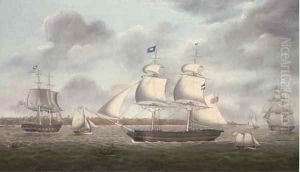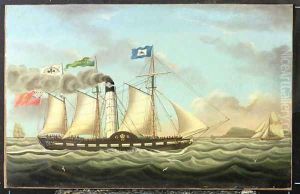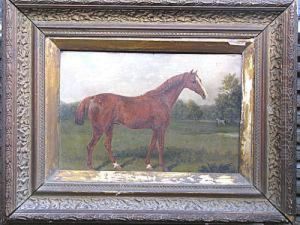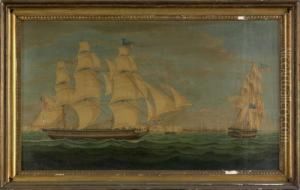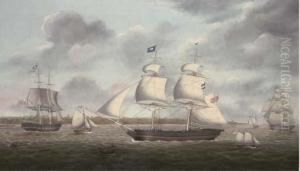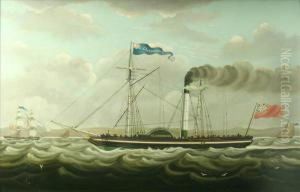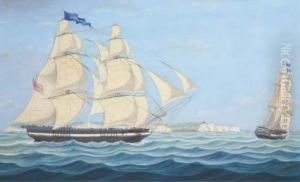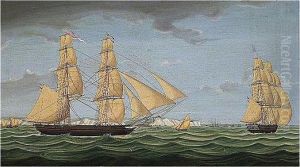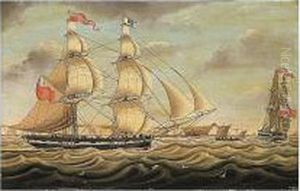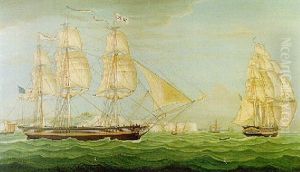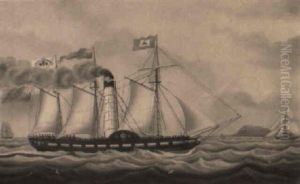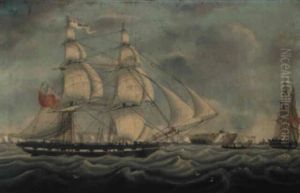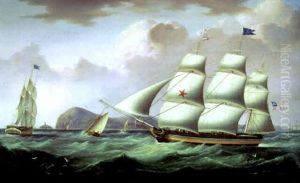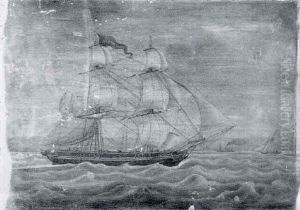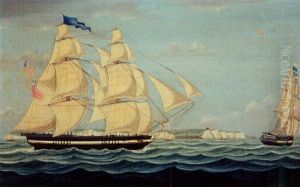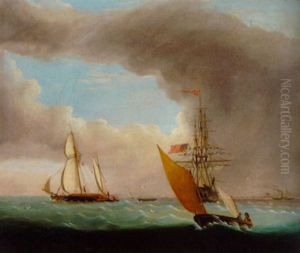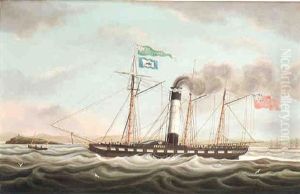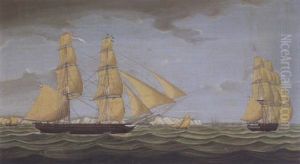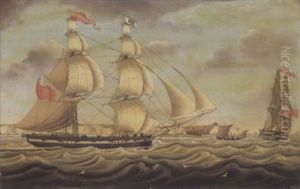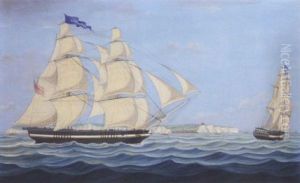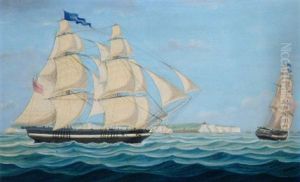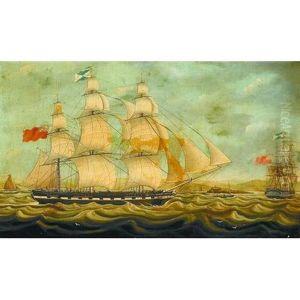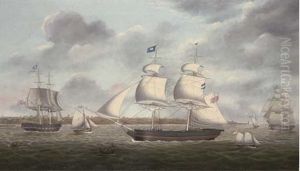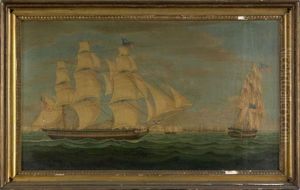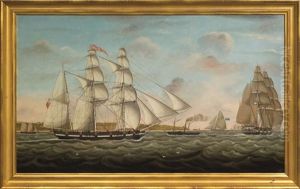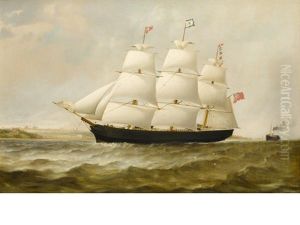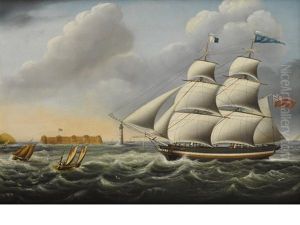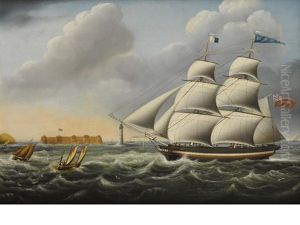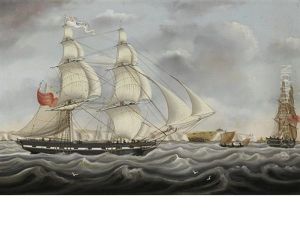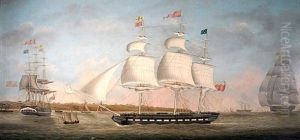Miles Walters Paintings
Miles Walters was a British marine painter, renowned for his detailed and picturesque maritime scenes. Born in 1773 in London, he was the son of a shipwright, which likely influenced his choice of subject matter in his artistic career. Walters’ early life and education remain somewhat obscure, but it is evident that his proximity to the sea and shipbuilding played a significant role in shaping his artistic interests and talents.
Walters began his career as a shipwright like his father but eventually transitioned to painting, where he could combine his technical knowledge of ships with his artistic skill. By the early 19th century, he had established himself as a marine artist, capturing the essence of the British naval power and merchant shipping that characterized the era. His works often depicted ships in various conditions, from calm seas to dramatic storms, and he paid great attention to the accuracy of the vessels' details. This accuracy is one reason why his work is valued not only for its artistic merit but also for its historical significance.
Although based in London for much of his life, Walters also spent time in the major port city of Liverpool, which was a hub for maritime activity. It was there that he found a wealth of inspiration and clientele for his paintings. His work was well-received, and he garnered a reputation for his ability to capture the intricate details of the ships and the mood of the sea.
Walters' paintings typically feature a variety of vessels, from small fishing boats to large man-of-war ships, all rendered with precision and care. His use of light and color was adept, often highlighting the play of sunlight on water or the looming threat of an impending storm.
Despite his success as an artist, little is known about his personal life, and he did not achieve the same level of fame as some of his contemporaries. However, his son, Samuel Walters, followed in his footsteps and became a prominent marine painter in his own right, often overshadowing the legacy of his father.
Miles Walters passed away in 1849, leaving behind a body of work that continues to be appreciated for its contribution to British marine art. Today, his paintings can be found in various art collections, both public and private, and serve as a testament to the skill and dedication of this maritime artist.
